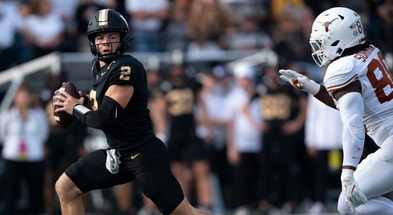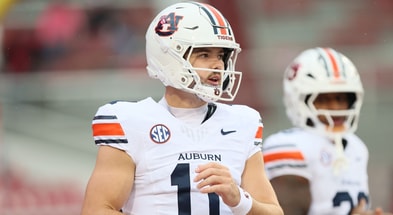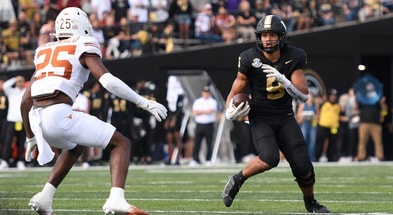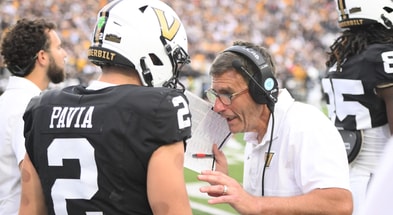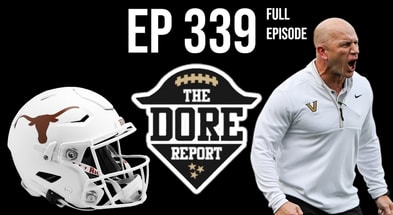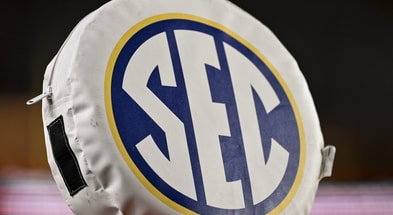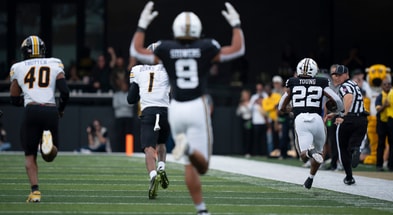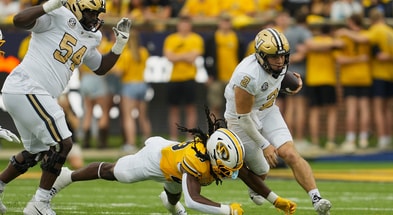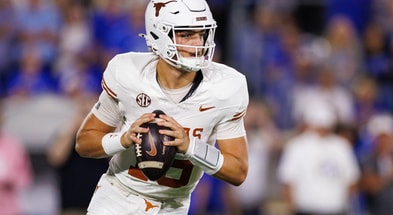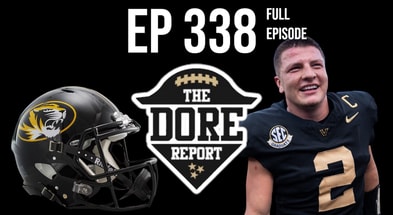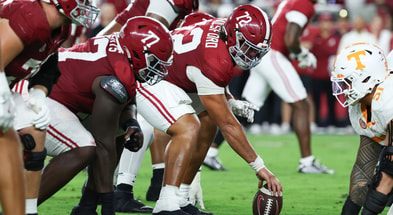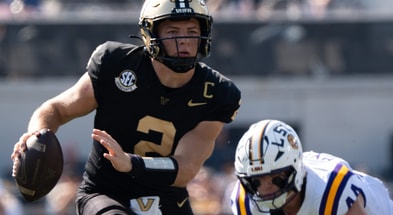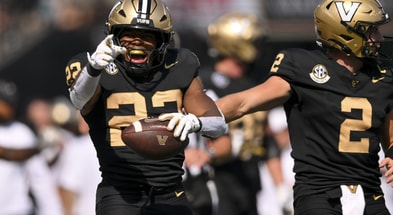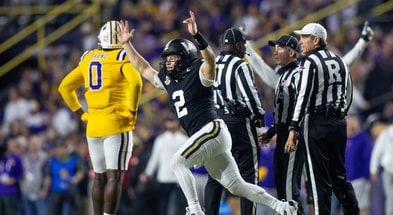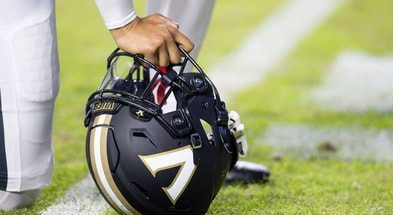Preview: No. 9 Vanderbilt at No. 20 Texas
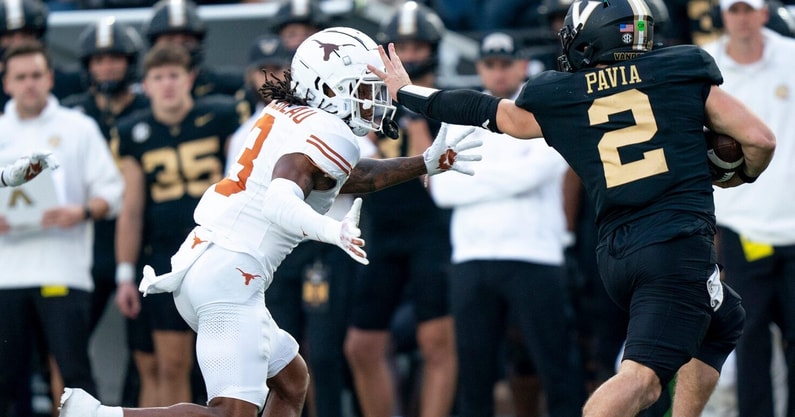
The No. 9 Vanderbilt Commodores head to Austin for a top-20 SEC showdown with No. 20 Texas, in what may be one of the most stylistically intriguing matchups of the 2025 season. Vanderbilt enters at 7-1 (3-1 SEC), while Texas sits at 6-2 (3-1 SEC) under head coach Steve Sarkisian. But the headline entering the week is clear: quarterback Arch Manning’s health.
Manning left last week’s overtime win over Mississippi State after taking a hit to the helmet on a scramble that set up the game-winning score. Sarkisian confirmed Monday that the redshirt sophomore is in concussion protocol and did not practice to begin the week, leaving his status for Saturday uncertain. Before exiting, Manning was sharp, completing 29 of 46 passes for a career-best 346 yards, three touchdowns, and an interception while adding a rushing score. Through eight games, he’s posted 1,795 passing yards, 15 touchdowns, six interceptions, and a 141.0 passer rating, plus 199 yards and six touchdowns on the ground.
Should Manning be unavailable, veteran Matthew Caldwell, a redshirt senior, would take over. Caldwell has appeared in five games, completing 8-of-11 passes (72.7%) for 85 yards and a touchdown, a small sample, but one that ended with the go-ahead throw to Emmett Mosley V against Mississippi State. Behind him, Texas’s depth chart features three freshmen: Karle Lacey Jr., Trey Owens (RS), and Luke Dunham.
Statistical Profile
From an efficiency standpoint, Vanderbilt has been among the most balanced teams in the country. The Commodores boast a +0.23 net EPA per play, ranked 14th nationally, with the offense contributing 0.25 EPA/play (13th) and the defense hovering around +0.02 (112th). Their overall success rate of 50.4% ranks fourth in the nation, fueled by a run game that succeeds on 48.8% of attempts (7th) and a passing game at 52.3% (8th).
On the other side, Texas owns a +0.12 net EPA/play (37th nationally). The Longhorns’ offense has been inconsistent, posting a –0.03 offensive EPA/play (103rd), while the defense has carried the load with –0.15 EPA/play (34th). Texas’s success rate sits at 39.6% overall (104th), with a 38.7% mark through the air (109th) and 40.6% on the ground (81st). Their defensive unit, however, is the strength, holding opponents to 38.9% success overall (36th), 41.3% through the air (61st), and 35.9% on the ground (25th).
Vanderbilt also holds an efficiency edge on early downs, generating +0.22 EPA per play on first and second downs (4th nationally), while Texas hovers slightly below zero. The Commodores are elite at sustaining drives, converting 55.1% on third- and fourth-down plays, whereas Texas ranks in the middle of the pack at around 40%. Both teams excel in the hidden-yardage department: Vanderbilt sits 14th in net field position (+5.0), while Texas ranks third nationally (+7.6), aided by elite special teams.
Matchup Dynamics
When Vanderbilt’s offense faces Texas’s defense, it’s a collision between consistency and disruption. The Commodores rank among the top five nationally in rushing EPA, averaging 0.22 EPA per rush (4th), while Texas’s front seven has limited opponents to –0.22 EPA per rush (3rd defensively). Vanderbilt’s offensive line thrives at generating positive early-down plays, which may help neutralize Texas’s aggressive interior defenders.
Conversely, when Texas has the ball, the metrics suggest a potential struggle if Manning doesn’t play. The Longhorns’ passing efficiency sits near the bottom third of the FBS, and their 40% success rate often forces long third downs, averaging 7.65 yards to go. Vanderbilt’s defense has been opportunistic in such situations, holding opponents to 43.5% on third downs and allowing just 40.6% overall.
Playmakers to Watch
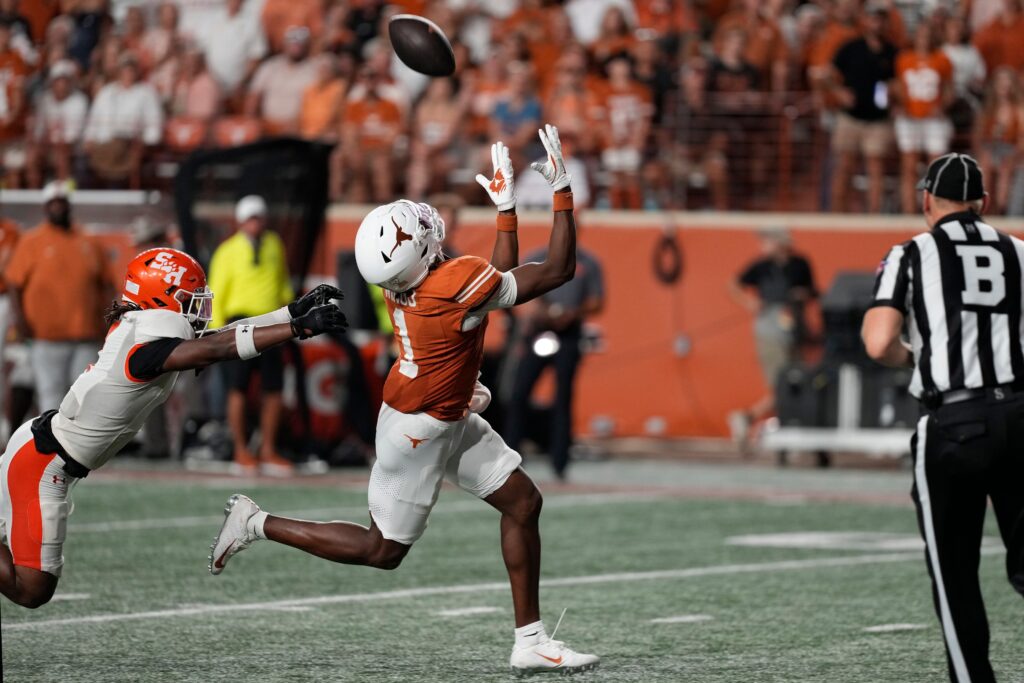
If Manning plays, expect him to target Ryan Wingo (504 yards, 4 TDs, 17.4 yards per catch) and Parker Livingstone (5 TDs). Both provide downfield explosiveness that could stress Vanderbilt’s secondary, which ranks 74th in pass-defense success (42.1%). Caldwell, however, may take a more controlled approach, leaning on short timing routes and the running backs.
Special teams could quietly decide the outcome. Mason Shipley has been automatic, hitting 12-of-15 field goals and all 28 extra points, while punter Jack Bouwmeester averages 45.4 yards per punt. Field position has been Texas’s lifeline; the Longhorns start near their own 32 on average, compared to Vanderbilt’s own 31, and rank third nationally in net field position. Vanderbilt, though, has been nearly as efficient, converting scoring chances at an elite rate once crossing midfield.
Prediction and Outlook
This matchup likely turns on whether Arch Manning clears concussion protocol. With him under center, Texas’s offensive ceiling rises considerably; his ability to create off-script and stretch defenses vertically is a dimension few can replicate. Without him, the Longhorns’ identity shifts toward field-position football and a defense-first mindset, a formula that has worked but leaves little margin for error against an offense as stable as Vanderbilt’s.
Vanderbilt’s offensive rhythm and top-five success rate should allow it to sustain drives and control tempo, even against Texas’s stout defensive front. If the Commodores continue their early-down efficiency and limit penalties, they can slowly wear down a Texas team that has struggled to sustain drives without explosive plays.
